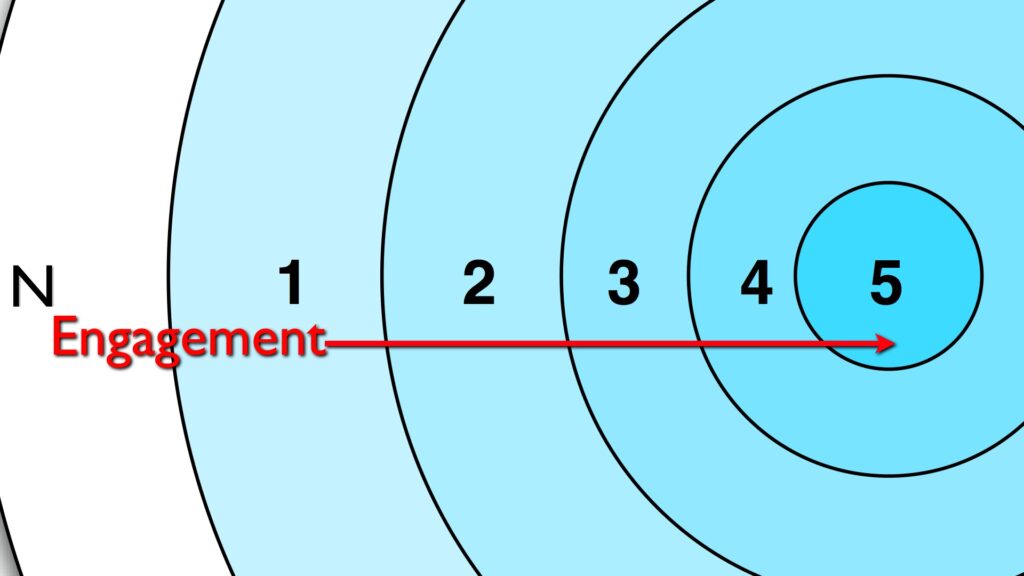In Swift Kick’s Dance Floor Theory leadership training, we teach students to recognize and be aware of the gradient of engagement on their campus. We teach them to understand the system and its parts so they can improve it.
The simple comparison is a dance floor, where level 5 dancers are often in the middle going crazy while neutral level attendees are on the wall with their arms crossed, often making fun of the 5s.
Pretend you are hovering above a dance floor. There are many interesting ramifications to this simple analogy, just a few examples:
Students have different needs depending on where they are at on the spectrum. The same thing that helps a five, e.g. louder music, will further alienate someone on the edge.
Students at the neutral stage need the most work to get them in. The jump from insulator (not affected) to merely resistant (can be affected with enough encouragement) is the most challenging.
Relationships create zones of comfort which enable lowered resistance to engagement. These are the dance circles friends always make.
Closeness is critical to increasing engagement conductivity. Proxemics founder Edward Hall puts it this way:
Like gravity, the influence of two bodies on each other is inversely proportional not only to the square of their distance but possibly even the cube of the distance between them.
So increasing relational density, by increasing intellectual, emotional or physical closeness, is always a good thing. (Keeping in mind the gradient segmentation, you can’t dump a neutral in the middle of a bunch of sweaty fives and expect it to work.)
The college campus works just like this dance floor.
The school’s goal is to have more people involved, engaged, experiencing, trying, and growing.
It’s a momentum game. People on a dance floor, and students on a college campus, move from absorbing energy from the room to giving energy to the room.
They move from modeling disengagement to modeling engagement.
The exciting question and pursuit for education is this: how can we more effectively move students from needing work (time, energy, and money) from the institution to doing work for the institution?
I’m using the institution as shorthand for “group,” by the way. The dance floor “room” and “institution” are both arbitrary psychological constructs of a group. The web allows us to move beyond the previous physical limitations and define groups very loosely, at almost any size.
These groups can, and will, be based not on location – though that still matters due to Proxemics – but on topic interest and passion similarity.
Even in these groups, the same small, highly engaged core, dynamic still applies.
The same question could be “How can we get more people to contribute to Wikipedia?” Why is it only 2% did 73.4% of the work? How can we move more people from simply reading (passive education) to writing (active education)?
How can we hack the system to increase engagement and participation systematically?
For a great conversation, and example of exactly this fluid grouping complete with 5 level dancers, with localized density, as the core of the group – check out the hackedu conversation on Twitter.
